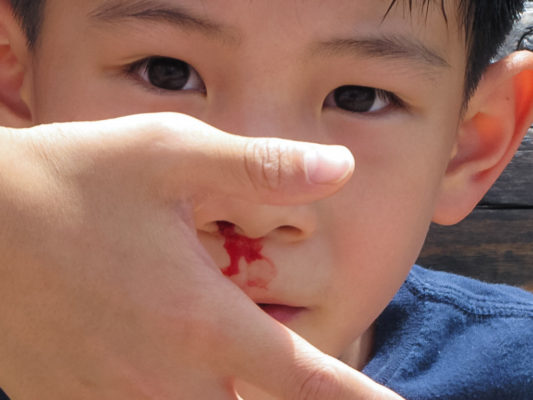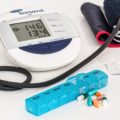Summers in the Philippines are scorching, and the heat’s side effects include dehydration, heat strokes, skin rashes, and a slew of other ailments. Summer nose bleed is a common concern during this time of year. Nosebleeds, which is most prevalent in youngsters, can also affect adults as the temperature rises.
When the tiny blood vessels lining the inside of your nose burst, nosebleeds (or epistaxis in medical lingo) occur. This can be caused by a number of things, the most prevalent of which being dry air and nose picking. The majority of nosebleeds aren’t harmful, but they can signal an underlying condition in rare circumstances.
Nosebleeds can be of two types. When the blood vessels in the front of the nose break and bleed, this is known as an anterior nosebleed.
The back or deepest section of the nose is where a posterior nosebleed occurs. Blood rushes down the back of the throat in this situation. Nasal bleeding from the back of the nose can be serious.

Common Causes of Summer Nosebleed
The most prevalent cause of nosebleeds is dry air. Nasal membranes, which are tissues within the nose, might get dry if you live in a dry area and use a central heating system.
Crusting forms inside the nose as a result of the dryness. Crusting can itch or irritate the skin. It is possible for your nose to bleed if it is scratched or picked.
How to Prevent Summer Nosebleed
Nosebleeds can be prevented in several ways.
- Mucus membranes that have dried out due to dry air inhalation or other factors can irritate the nose and cause nosebleeds. Using a saline spray to keep the membranes moist can assist. During the day, you can use this spray every two to three hours.
- For someone who has had a nosebleed, long and sharp fingernails might be the worst enemy. You might pick your nose without even realizing it, such as late at night when you’re sleeping. You’re more prone to get a nosebleed if your fingernails are too long or sharp.
- Humidifiers give moisture to the air, which helps to keep mucous membranes moist and prevents them from drying out. You can use one to prevent nosebleeds while sleeping. Simply follow the manufacturer’s directions for cleaning the humidifier, as the moisture and heat in the machine can attract bacteria and mold.
- Consider donning protective equipment if you have a history of nosebleeds and play a sport like basketball where you’re more likely to be injured.

How to Treat Summer Nosebleed
Lean forward when sitting upright. Maintaining your upright position lowers blood pressure in the veins of your nose. This helps to prevent future bleeding. Sitting upfront will assist you to avoid swallowing blood, which can cause stomach irritation.
Blow your nose gently. Clear your nose of blood clots by blowing it. Then, using a nasal decongestant containing oxymetazoline, spray both sides of your nose (Afrin).
Pinch the bridge of your nose. Pinch your nostrils shut with your thumb and index finger. Take a deep breath through your mouth. Pinch for another 10 to 15 minutes. Pinching applies pressure to the bleeding spot on the nasal septum, which frequently stops blood flow.

Don’t miss any of our informative health articles — subscribe to our newsletter now! Follow Top Medical Magazine on Facebook, Instagram, and LinkedIn to stay updated, too!
References:
- 13 Tips to Stop and Prevent Nosebleed
- What Causes Nosebleeds and How to Treat Them
- What’s Causing My Summer Nosebleed?
- Nosebleeds: First Aid



